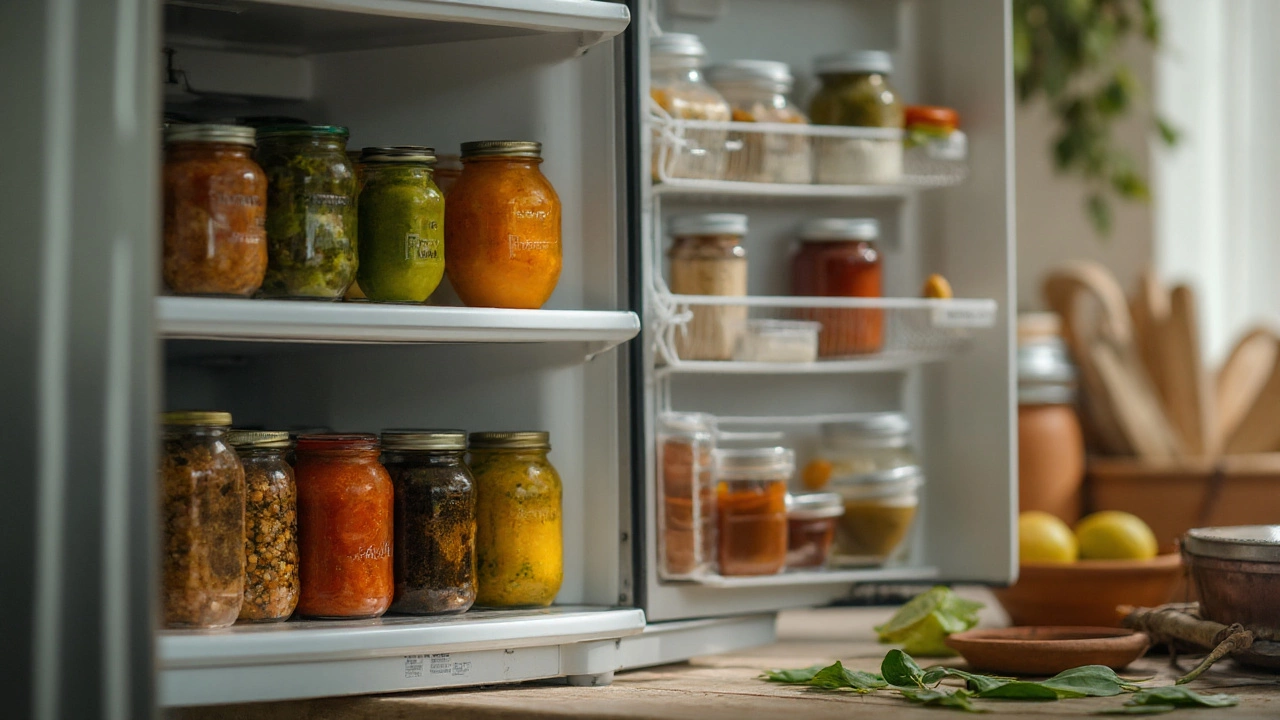Canning Chutney: Preserve Fresh Flavors for Longer
When working with Canning Chutney, the process of sealing homemade chutney in airtight containers so it stays safe and tasty for months, you’re essentially turning a seasonal condiment into a pantry staple. People often wonder if the bright, tangy taste can survive the heat of a boiling water bath – the answer is yes, as long as you follow a few key rules. This intro will walk you through what canning chutney really means, why it matters, and what to expect from the articles below.
Why Canning Chutney Makes Sense
Chutney, a blend of fruits, vegetables, spices, and vinegar that can be sweet, salty, or spicy is a versatile side that brightens any meal. By canning it, you lock in fresh flavors, cut down on waste, and always have a ready‑to‑serve dip for snacks or cooked dishes. The practice also lets you experiment with regional twists – mango, tamarind, cilantro, or even coconut – without worrying about spoilage. Most home cooks start with small batches, but the technique scales up nicely for larger gatherings or holiday gifts.
Preservation, the art of extending food’s shelf life through methods like canning, freezing, or drying relies on two scientific pillars: heat and acidity. Heat destroys microbes, while acidity (from vinegar or lemon juice) creates an environment where they can’t thrive. When you combine these in a sealed jar, you get a stable product that can sit on a shelf for six months or more. Understanding this relationship helps you tweak recipes – add a splash more lime for extra safety or adjust sugar to balance flavor.
Food Safety, the set of practices that prevent foodborne illness during preparation, storage, and consumption is the backbone of any successful canning project. Simple mistakes like under‑processing jars, using low‑acid ingredients, or skipping headspace can turn a delicious batch into a health hazard. The posts in this collection cover everything from checking pH levels to spotting a compromised seal, so you’ll never be left guessing whether your chutney is ready to eat.
Choosing the right Canning Jars, glass containers with two‑piece lids designed for water‑bath or pressure canning is another critical step. Mason jars with wide mouths make it easy to ladle thick chutney, while the metal bands keep the seal tight during processing. Make sure each jar is free of chips and the lids are inspected for rust before use. Proper jar selection also influences how evenly heat circulates, which affects the final texture of your chutney.
The two main processing methods you’ll encounter are water‑bath canning and pressure canning. Water‑bath canning works for high‑acid chutneys (pH ≤ 4.6) and involves submerging sealed jars in boiling water for a set time, usually 10‑20 minutes depending on jar size. Pressure canning is reserved for low‑acid versions, where the added steam pressure raises the temperature above 212 °F, destroying tougher bacterial spores. Both techniques require a reliable timer and a sturdy rack to keep jars from touching the pot’s bottom.
Flavor tweaks are where canning really shines. Because the heat mellows sharp edges, you might want to increase the zing of chilies or the sweetness of mango before sealing. Adding fresh herbs like cilantro or mint after the jars have cooled (but before the final seal) can preserve their bright notes. Many cooks also include a teaspoon of mustard seed or a pinch of asafoetida for depth – these spices survive processing well and add a signature Indian aroma.
Now that you know the basics – what canning chutney involves, which tools you need, and how safety ties into flavor – the articles below will dive deeper into each step. From troubleshooting a leaky lid to mastering the perfect mango‑tamarind blend, you’ll find actionable tips that turn theory into tasty, shelf‑stable results. Let’s get started and turn your kitchen into a chutney‑preserving hub.

Homemade Chutney Shelf Life: Fridge, Pantry, and Canning Safety Guide
How long does homemade chutney last? Clear timeframes for fridge, pantry, and freezer, plus canning safety, spoilage signs, and storage tips you can trust.